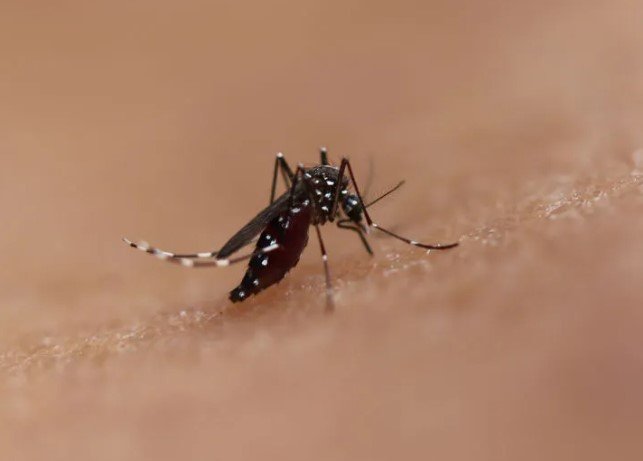Singapore faces a growing threat from chikungunya virus as cases climb in 2025, driven by mosquito bites and warmer weather. Health experts warn that climate change could spark bigger outbreaks, raising questions about risks for residents and links to dengue fever.
Rising Chikungunya Cases in Singapore
Health officials report a sharp increase in chikungunya infections this year. As of mid-August 2025, Singapore has seen 21 confirmed cases, more than double the 10 cases from the same period in 2024. Last year, the total reached only 15 cases for the whole year.
This uptick comes amid global spikes, with over 240,000 cases worldwide in 2025 alone, according to health agencies. Local authorities point to travelers bringing the virus back from affected areas, combined with ideal breeding conditions for mosquitoes.
Experts note that while numbers remain low compared to dengue, the trend signals potential for larger clusters if not checked early.
What You Need to Know About Chikungunya Virus
Chikungunya is a viral illness spread through bites from infected Aedes mosquitoes. It causes sudden high fever, intense joint pain, headaches, muscle aches, and sometimes a rash.
Symptoms often start three to seven days after a bite and can last for weeks or months. In rare cases, joint pain lingers for years, making daily life tough for older adults.

Unlike some viruses, chikungunya has a low death rate, under one in 1,000 people. However, it can lead to severe complications in vulnerable groups like newborns, seniors, and those with health issues.
There is no specific cure or vaccine widely available yet, so treatment focuses on rest, fluids, and pain relief medications.
- Common symptoms: High fever up to 104°F, severe joint swelling, fatigue that lasts days.
- Less common signs: Nausea, red eyes, skin rash that itches.
How Climate Change Fuels the Spread
Warmer temperatures and changing rain patterns create perfect spots for mosquitoes to breed. In Singapore, rising heat extends the mosquito season, allowing Aedes species to thrive in urban areas.
Global reports show climate shifts pushing these insects into new regions, from Europe to Asia. For instance, longer summers in Europe have led to record outbreaks in places like France this year.
In Southeast Asia, experts predict more frequent floods and humidity will boost mosquito numbers, potentially causing chikungunya and dengue to surge together.
This environmental link adds urgency, as studies suggest a 1°C temperature rise could double mosquito populations in some areas.
The Role of Aedes Mosquitoes in Outbreaks
Aedes aegypti and Aedes albopictus are the main carriers of chikungunya. These daytime biters breed in small water pools, like flower pots or discarded containers.
In Singapore’s dense cityscape, even minor water buildup can spark breeding sites. The same mosquitoes spread dengue and Zika, raising fears of multiple diseases hitting at once.
Health teams conduct regular checks and fogging to control populations, but community efforts are key to eliminating breeding spots.
| Year | Chikungunya Cases in Singapore | Global Cases (Estimated) |
|---|---|---|
| 2023 | 8 | 150,000 |
| 2024 | 15 | 200,000 |
| 2025 (as of Aug) | 21 | 240,000+ |
This table highlights the upward trend, with 2025 already outpacing previous years.
Global Outbreaks and Lessons for Singapore
Around the world, chikungunya is exploding in new spots. China reported over 8,000 cases in one province this summer, prompting drone-based mosquito hunts and strict controls.
In Europe, France saw its earliest outbreaks in May 2025, linked to travelers from islands like Reunion. South Asia battles seasonal waves, with doctors noting frightening spikes in cities.
These events show how fast the virus travels via people and trade. For Singapore, a major travel hub, imported cases pose a constant risk.
Logical reasoning suggests that without strong prevention, Singapore could face concurrent outbreaks of chikungunya and dengue, straining health resources.
Recent events, like the 2024 dengue peak in neighboring countries, underline the need for vigilance.
Prevention Tips for Singapore Residents
Singaporeans can protect themselves by using insect repellent, wearing long clothes, and installing screens on windows. Clear standing water weekly to stop mosquito breeding.
Authorities recommend reporting potential breeding sites and staying alert during peak mosquito hours, from dawn to dusk.
Vaccines are in trials, but for now, awareness and hygiene are the best defenses.
- Key actions: Apply DEET-based repellents, empty water from pots, use mosquito nets for sleeping.
- Community steps: Join neighborhood clean-ups, support fogging programs.
Experts stress that early detection through testing can limit spread.
Expert Views on Future Risks
Infectious disease specialists warn that the East-Central-South African strain of the virus may adapt better to local mosquitoes, increasing transmission risks.
One expert noted that while chikungunya is less deadly than dengue, its long-term pain can disable workers and burden families.
With climate models predicting hotter years ahead, building resilient systems like better surveillance and public education is crucial.
Singapore’s track record in controlling dengue offers hope, but ongoing global warming demands adaptive strategies.
Share your thoughts on this rising health concern in the comments below, and spread the word to help keep our community safe.
